Italian kitchen design represents the perfect marriage of timeless elegance and practical functionality, creating spaces that serve as the heart of the home. Drawing inspiration from centuries of culinary tradition and artisanal craftsmanship, these kitchens seamlessly blend rustic charm with modern sophistication. From the sun-drenched farmhouses of Tuscany to the sleek contemporary homes of Milan, Italian kitchen design offers diverse approaches that celebrate both heritage and innovation, making every cooking experience a celebration of la dolce vita.
1. Tuscan Rustic Italian Kitchen Design with Terracotta Elements
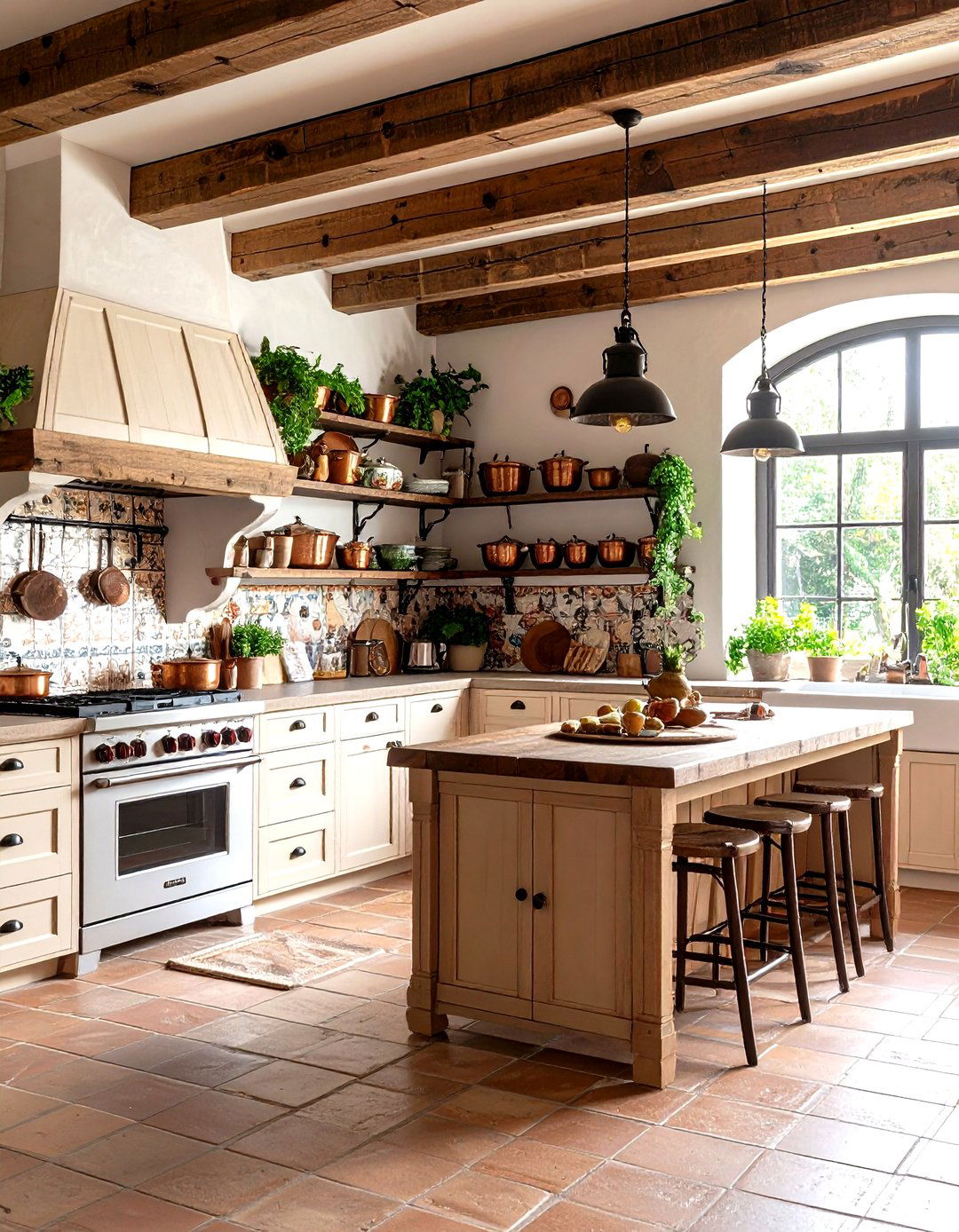
A Tuscan rustic Italian kitchen design embodies the warmth and authenticity of Italian countryside living through carefully curated natural materials and earth-toned color palettes. This approach features exposed wooden ceiling beams rescued from traditional farmhouses, creating architectural interest while maintaining historical authenticity. Terracotta floor tiles in sandy, natural colors provide the foundation, while distressed wooden cabinetry painted in warm cream or sage green tones adds character. The design incorporates hand-painted ceramic backsplash tiles featuring traditional Italian motifs, complemented by wrought iron chandeliers that cast warm, inviting glows throughout the space. Natural stone countertops in matte finishes pair beautifully with copper pots displayed on open shelving, while herb gardens in window boxes bring the outdoors inside.
2. Modern Minimalist Italian Kitchen Design with Clean Lines
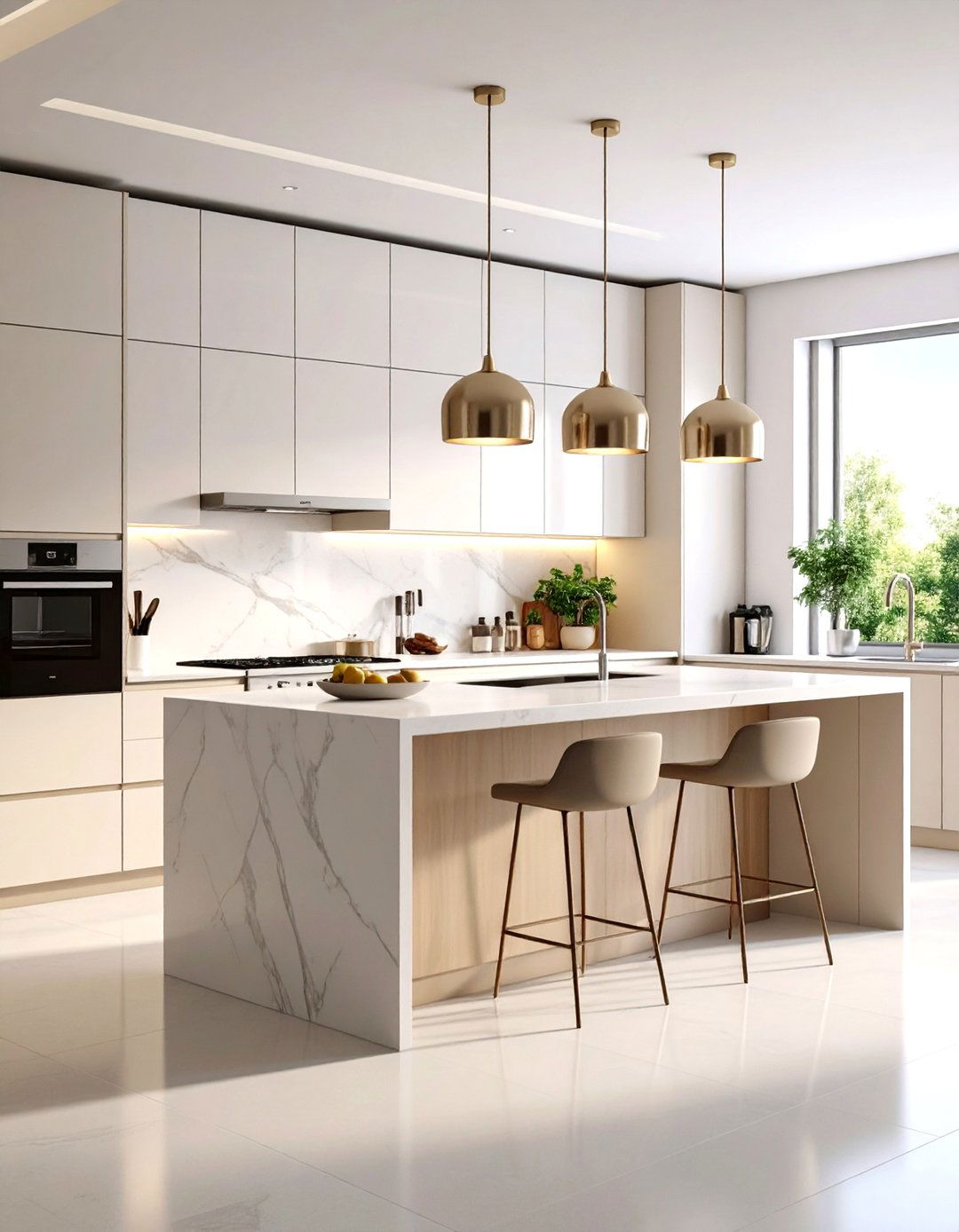
Contemporary Italian kitchen design embraces the philosophy of "less is more" through streamlined aesthetics and innovative functionality. This approach features handleless slab-door cabinets with recessed channel grips, eliminating visual clutter while maintaining sophisticated elegance. The design emphasizes monolithic surfaces and continuous visual harmony through integrated appliances that blend seamlessly with cabinetry. Neutral color schemes of white, gray, and beige create clean, minimalist looks while high-quality materials like marble and stainless steel add luxurious touches. Statement pendant lighting serves as both functional illumination and artistic expression, while slim-profile elements including low toe-kicks and slender countertops enhance the overall sense of airiness and modern sophistication.
3. Italian Farmhouse Kitchen Design with Vintage Charm

Traditional Italian farmhouse kitchen design celebrates rustic authenticity through weathered materials and time-honored craftsmanship techniques. This style features large farmhouse sinks with deep basins and wide apron fronts, typically crafted from durable porcelain or fireclay for both functionality and visual appeal. The design incorporates solid wood cabinetry with hand-painted details showcasing regional Italian artistry, complemented by decorative brass or iron hardware that reflects old-world charm. Natural stone floors and stucco walls create textural foundations, while heavy wooden beams overhead add architectural gravitas. Open shelving displays collections of vintage pottery and copper cookware, while woven baskets and ceramic vessels add personal touches that reflect Italian cultural traditions and family heritage.
4. Contemporary Italian Kitchen Design with Glass Cabinet Elements
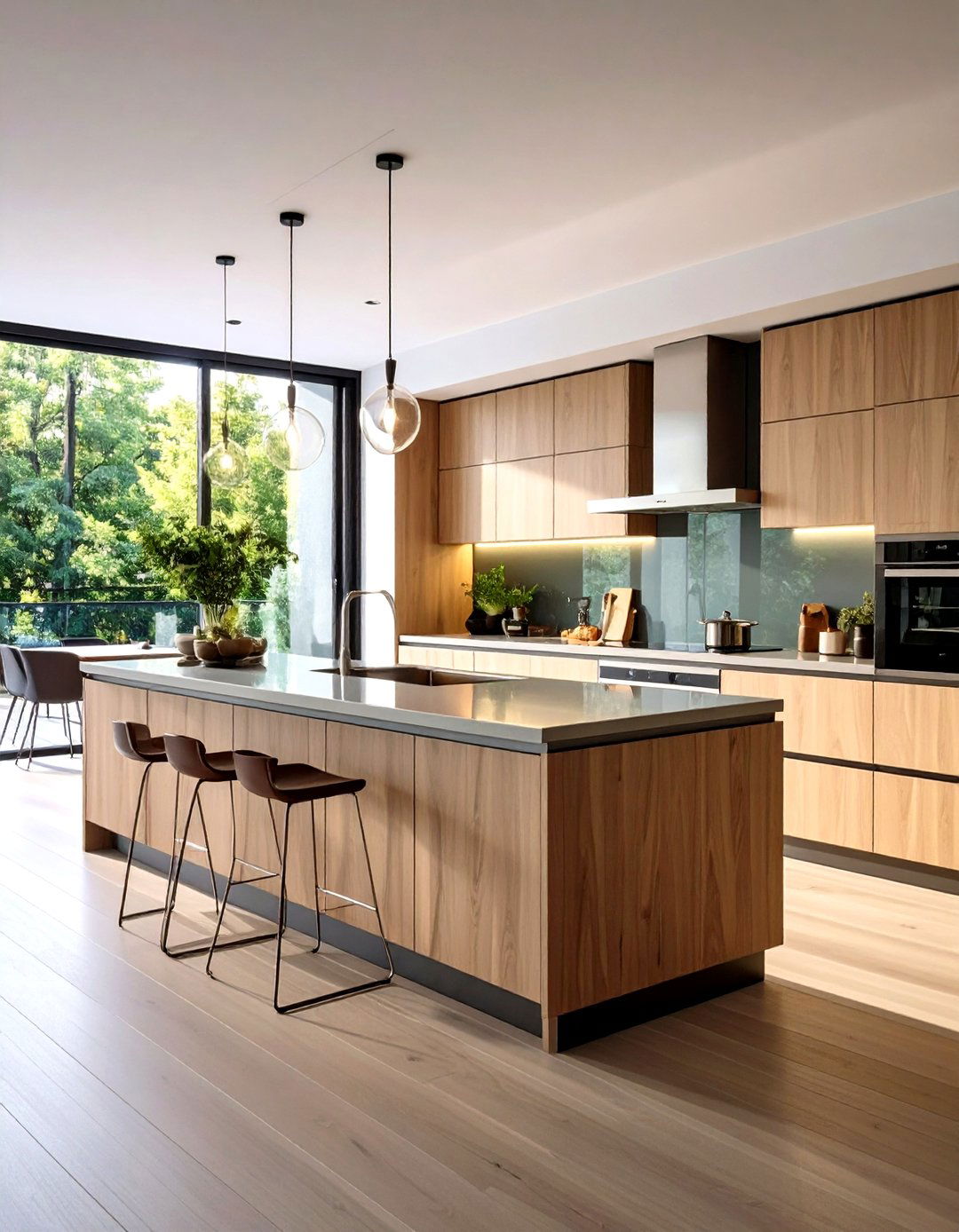
Modern Italian kitchen design incorporates transparent glass elements to create visual lightness and sophisticated display opportunities throughout the cooking space. This approach combines wood, white, and transparent glass cabinets to create dynamic designs full of contrast and depth, where glass introduces organic touches when paired with matte or glossy surfaces. The design features smoked glass display cabinets that add sophistication while showcasing fine dinnerware and decorative objects. These glass elements create anti-fingerprint surfaces that are soft to touch while remaining extremely resistant to shocks, scratches, and everyday wear. Integrated LED lighting within glass cabinets provides gentle illumination that highlights displayed items, while maintaining the clean aesthetic through hidden electrical components and seamless installation details.
5. Traditional Italian Kitchen Design with Terracotta Backsplash

Authentic Italian kitchen design celebrates the rich ceramic traditions of the Mediterranean through hand-crafted terracotta tile applications and warm color palettes. Terracotta tiles in natural sandy colors and finishes create beautiful backsplash focal points, while mosaic arrangements add lively design flourishes that reflect regional artistry. This design approach features terracotta flooring that extends the warm earth-tone palette throughout the entire kitchen space. Ornate wood range hoods provide elegant architectural details, while handmade tiles create old-world backsplash looks that pair beautifully with natural stone countertops. The overall aesthetic incorporates Mediterranean accessories including ceramic pots, woven storage baskets, and copper cookware displays that add functional beauty. Traditional techniques like hand-laid stonework and artisanal tile placement showcase Italian craftsmanship while creating spaces that feel both timeless and authentically regional.
6. Industrial Italian Kitchen Design with Metal Accents
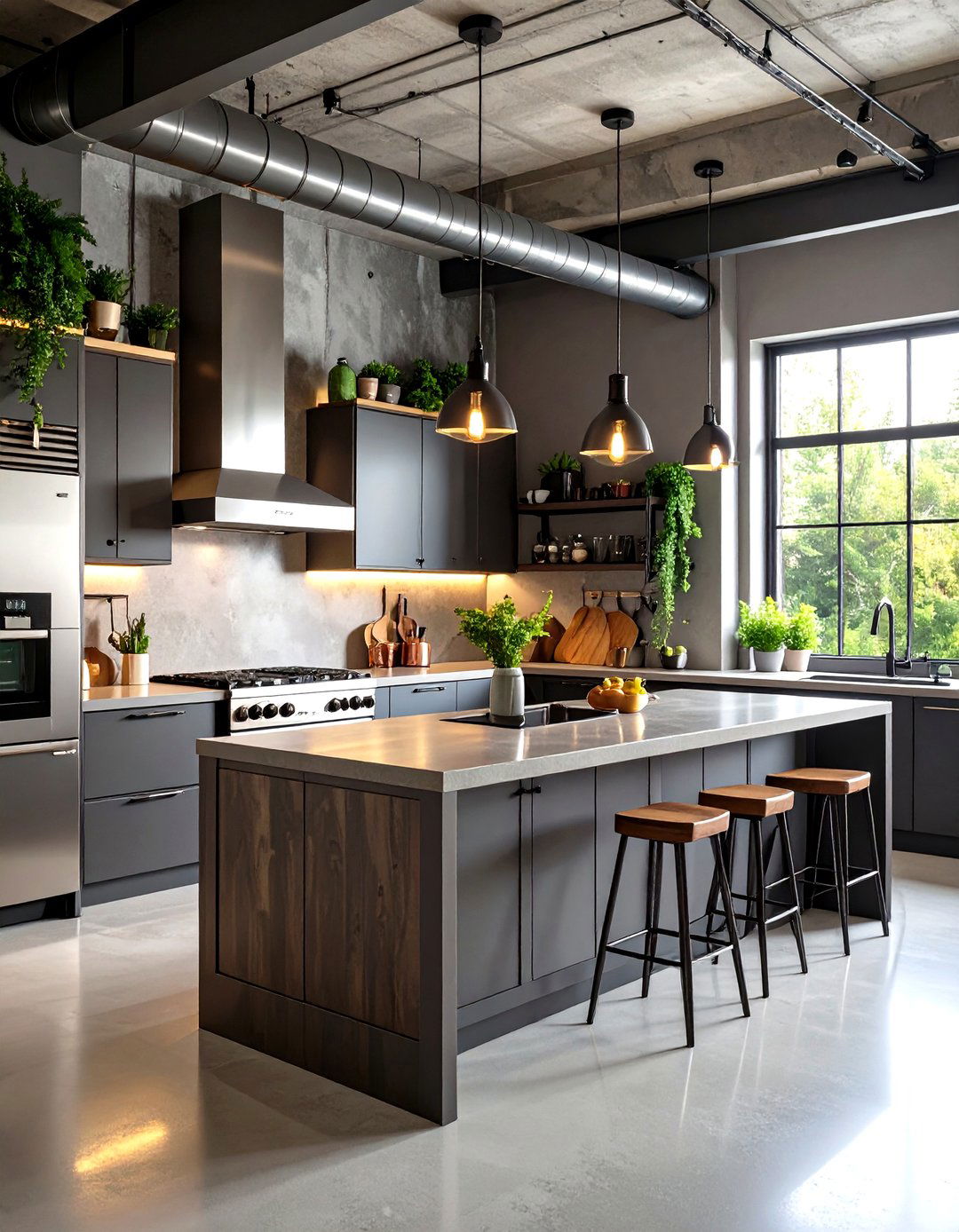
Contemporary Italian kitchen design embraces industrial aesthetics through sophisticated metal finishes and urban-inspired material combinations. This approach incorporates large numbers of metal structures and equipment, including innovative Mettalix materials that expand beyond traditional aluminum, steel, and zamak applications. The design features exposed steel framework, brushed metal backsplashes, and integrated stainless steel appliances that create cohesive industrial elegance. Industrial-style elements include exposed pipes, concrete or brick walls, and vintage or repurposed materials that create unique, edgy looks. Statement lighting fixtures in blackened steel or brass finishes provide task illumination while contributing to the overall industrial aesthetic. This style successfully balances raw materials with refined Italian craftsmanship, creating kitchens that feel both modern and rooted in Italy's rich manufacturing heritage.
7. Italian Kitchen Design with Marble Waterfall Island Countertops
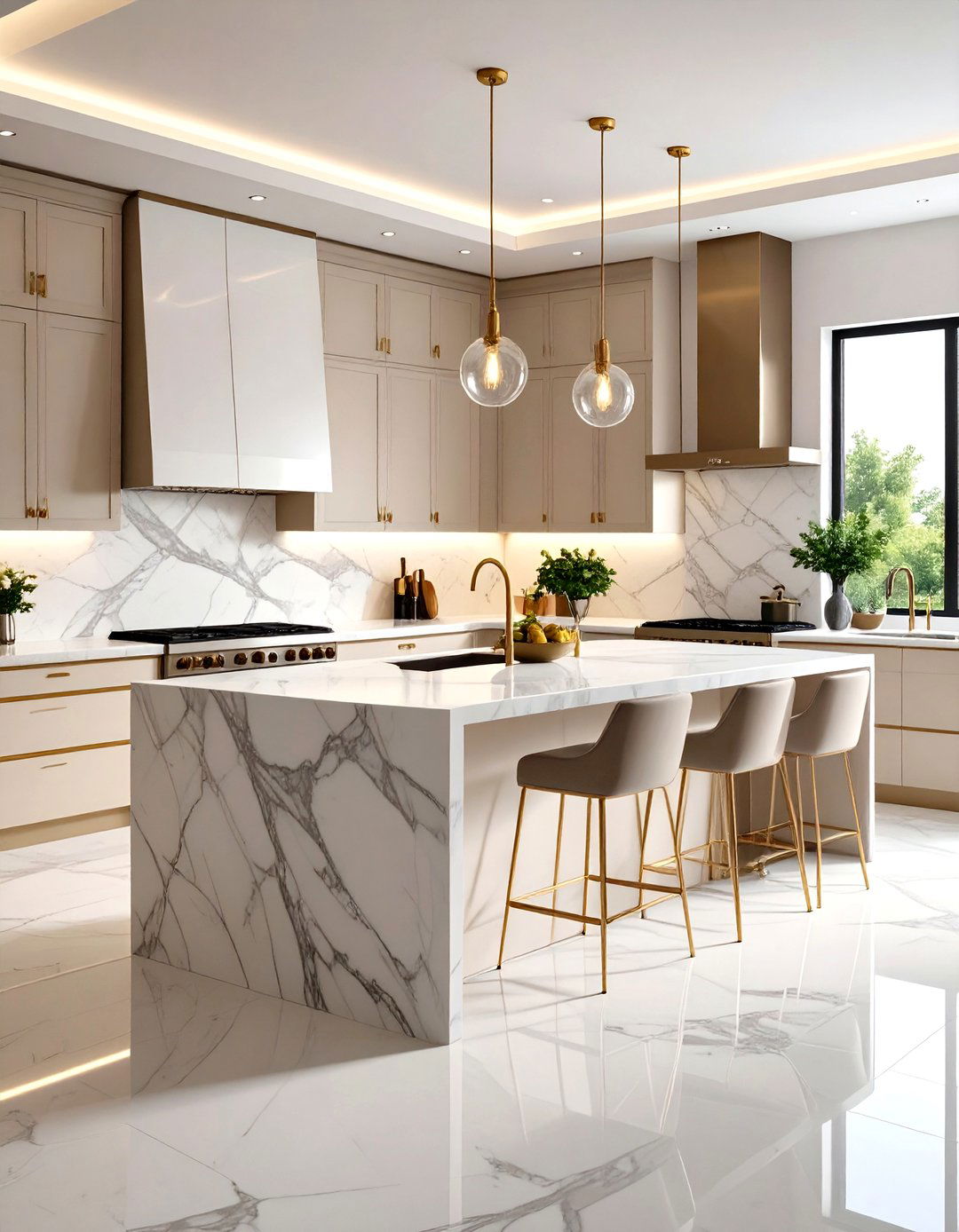
Luxurious Italian kitchen design showcases the timeless beauty of natural marble through dramatic waterfall island applications and sophisticated stone work. Waterfall edges create sleek, modern looks where countertop material cascades down island sides, while dramatic oversized slab backsplashes in granite, quartz, and marble add visual impact. This design approach emphasizes the natural veining and character of Italian marble, particularly prized Carrara varieties with their distinctive gray patterns. Italian Calacatta marble walls combined with meticulous woodwork create magical spaces that blend old-world materials with modern conveniences. The design features minimal seaming and continuous stone surfaces that highlight the natural beauty of the material. Integrated lighting beneath the waterfall edges creates subtle illumination that enhances the marble's natural translucency and adds sophisticated ambiance during evening hours.
8. Curved Italian Kitchen Design with Organic Flow

Innovative Italian kitchen design embraces organic curves and flowing lines that soften traditional angular layouts while maintaining functional efficiency. Modern Italian designers are breaking traditional molds with bold shapes and curves, featuring unusual forms and monolithic designs that create soft, organic feelings in kitchen spaces. This approach incorporates curved countertops that add fluidity to work surfaces while creating more comfortable interaction zones. The design features rounded cabinet edges and flowing transitions between different kitchen zones, eliminating harsh corners for safer navigation. Curved elements represent a significant trend toward saying goodbye to sharp edges and harsh corners, creating more naturally flowing kitchen environments. These organic forms pair beautifully with natural materials like wood and stone, creating harmonious relationships between built elements and natural textures throughout the cooking space.
9. Italian Kitchen Design with Copper Accent Features
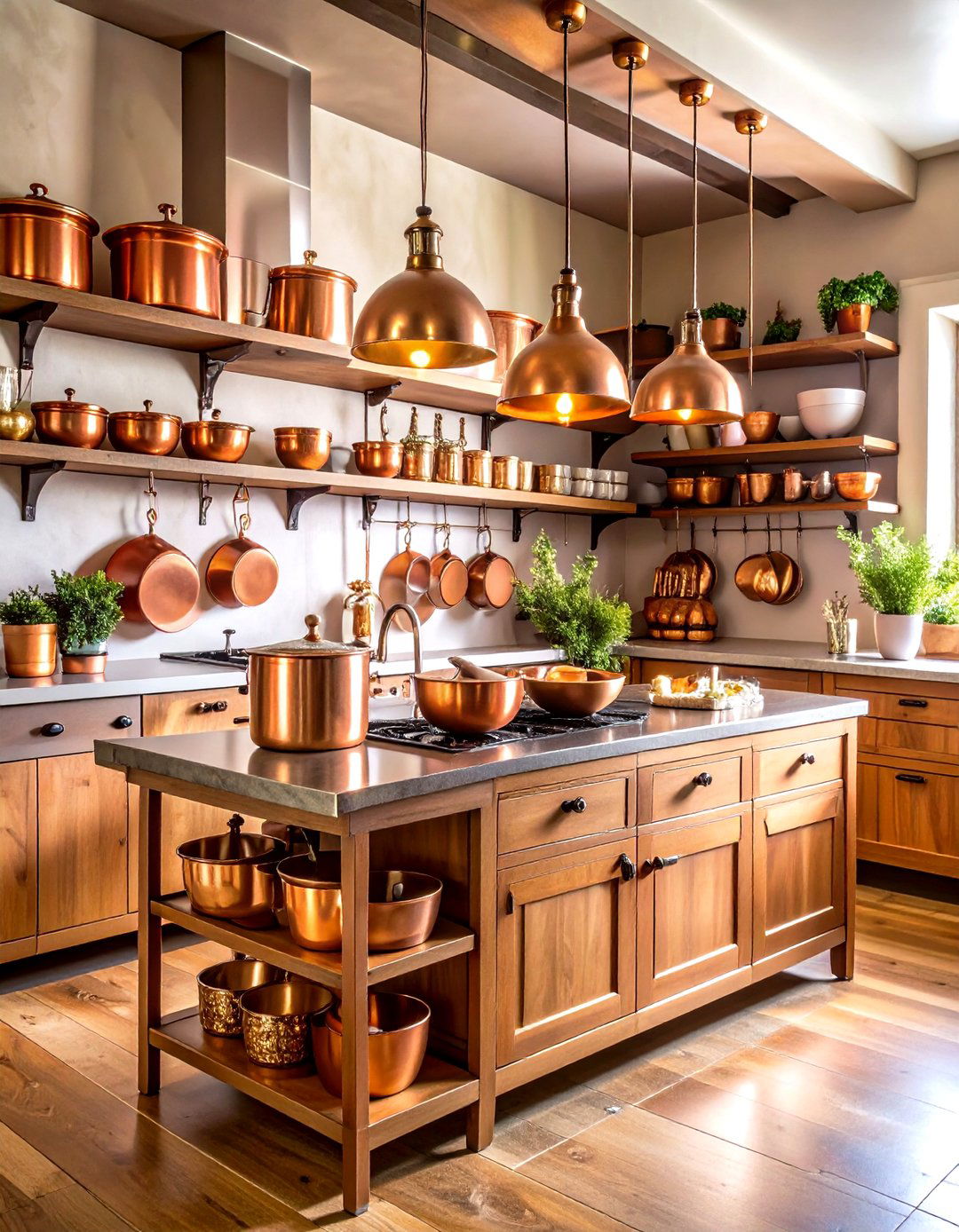
Traditional Italian kitchen design celebrates the warm beauty of copper through functional displays and artisanal metalwork that reflects centuries of Italian craftsmanship. Open shelving showcases carefully selected collections of copper pots and pans, adding both decorative appeal and practical functionality to the kitchen design. This approach features copper range hoods that serve as dramatic focal points while providing essential ventilation for cooking activities. Copper pieces act as functional decorations that narrate the rich history of Italian culinary traditions, from vintage espresso makers to artisanal cookware collections. The design incorporates copper lighting fixtures that cast warm, honey-colored illumination throughout the space. Copper patina develops naturally over time, adding character and authentic aging that enhances the overall aesthetic. These metallic elements pair beautifully with natural wood cabinetry and stone surfaces, creating rich material contrasts that feel both luxurious and authentically Italian.
10. Sage Green Italian Kitchen Design with Natural Harmony
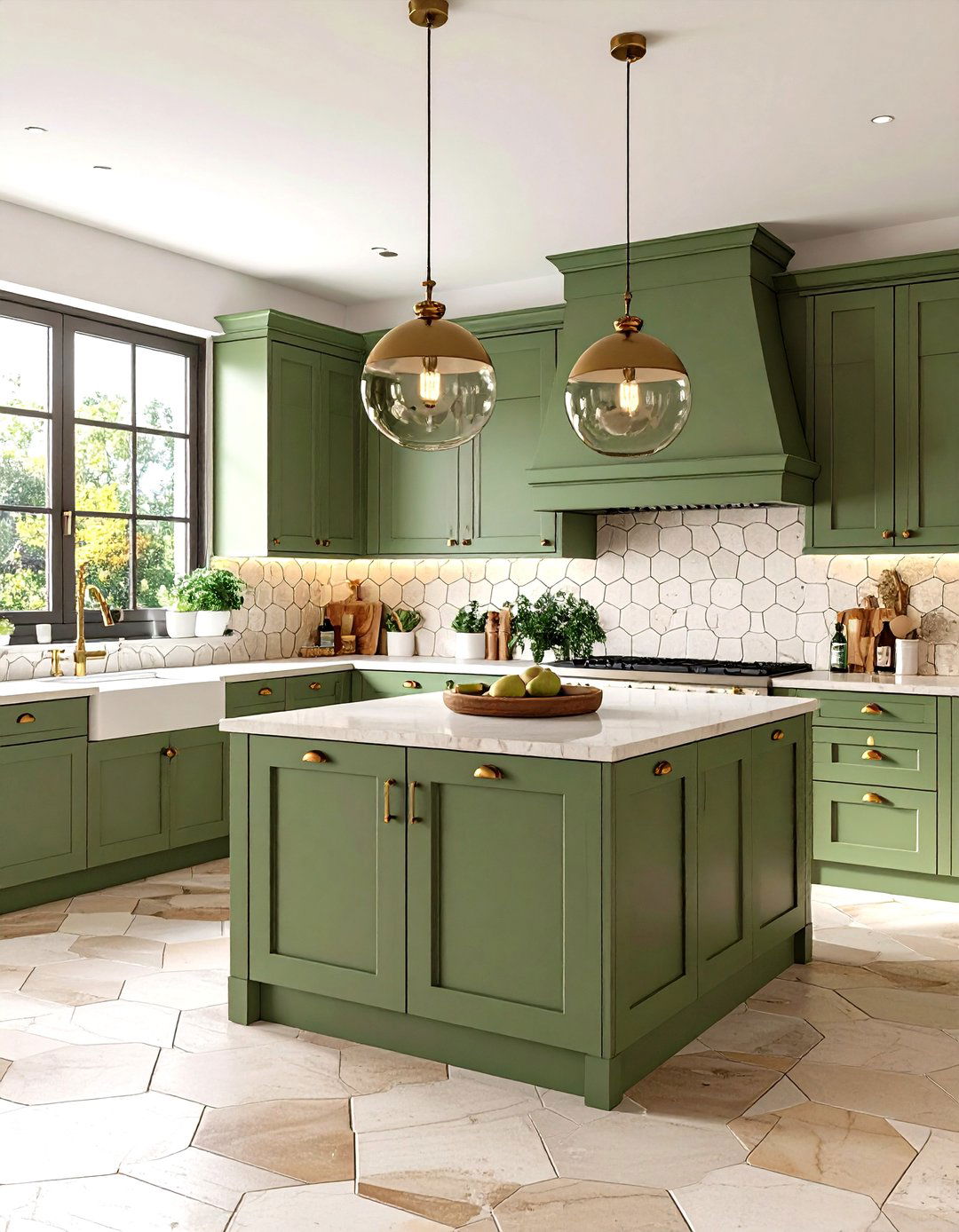
Sophisticated Italian kitchen design embraces the calming beauty of sage green cabinetry that reflects the natural landscapes of the Italian countryside. Sage green cabinetry paired with terracotta hexagonal tiles creates authentic old-world style that feels both timeless and naturally grounded. This color choice provides a sophisticated alternative to traditional earth tones while maintaining connection to Italian natural environments. Dusty sage cabinet finishes create airy, bright color schemes that work beautifully with available natural light and complement soft natural tones. The design incorporates natural wood accents and stone countertops that enhance the organic color palette. Brass or copper hardware provides warm metallic contrasts that prevent the green from feeling cold or institutional. This approach creates kitchens that feel both contemporary and rooted in Italian design traditions, offering versatile backdrops for both casual family meals and elegant entertaining occasions.
11. Italian Kitchen Design with Exposed Wooden Beam Ceilings
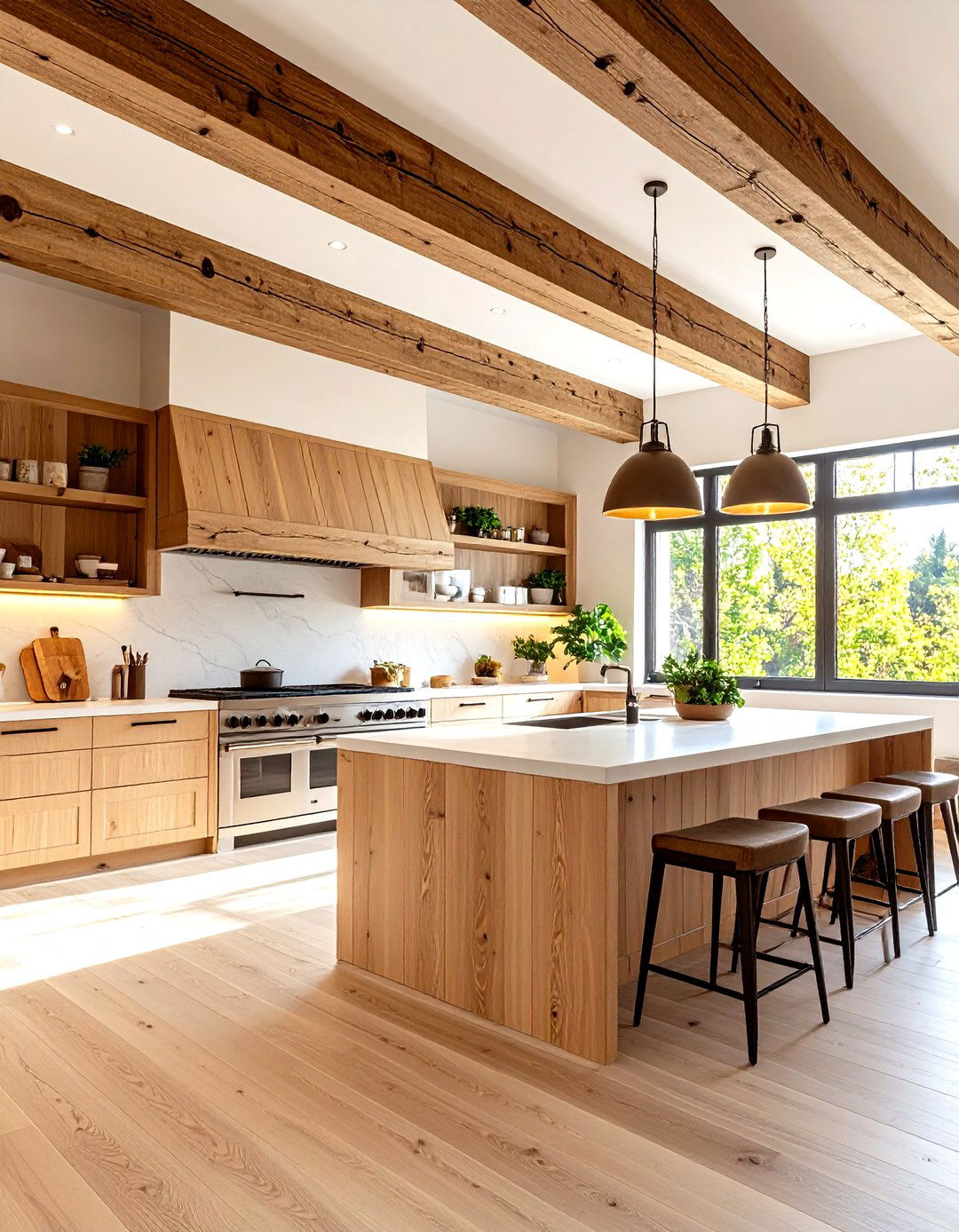
Architectural Italian kitchen design celebrates structural beauty through exposed wooden ceiling beams that create dramatic overhead focal points and rustic sophistication. Ceiling timbers rescued from Tuscan farmhouses add authentic historical character, while exposed wood beams provide architectural interest in spacious kitchen environments. This design approach emphasizes natural wood finishes that showcase beautiful grain patterns and artisanal craftsmanship techniques. Heavy wooden beams create authentic Italian farmhouse aesthetics while supporting both traditional and contemporary design elements. The design pairs exposed beams with complementary wood cabinetry and natural stone surfaces for cohesive material relationships. Strategic lighting between beams provides ambient illumination without detracting from the natural wood beauty. These structural elements create impressive ceiling height perception while adding warmth and character that makes large kitchen spaces feel intimate and welcoming for family gatherings and entertaining.
12. Two-Tone Italian Kitchen Design with Contrasting Elements
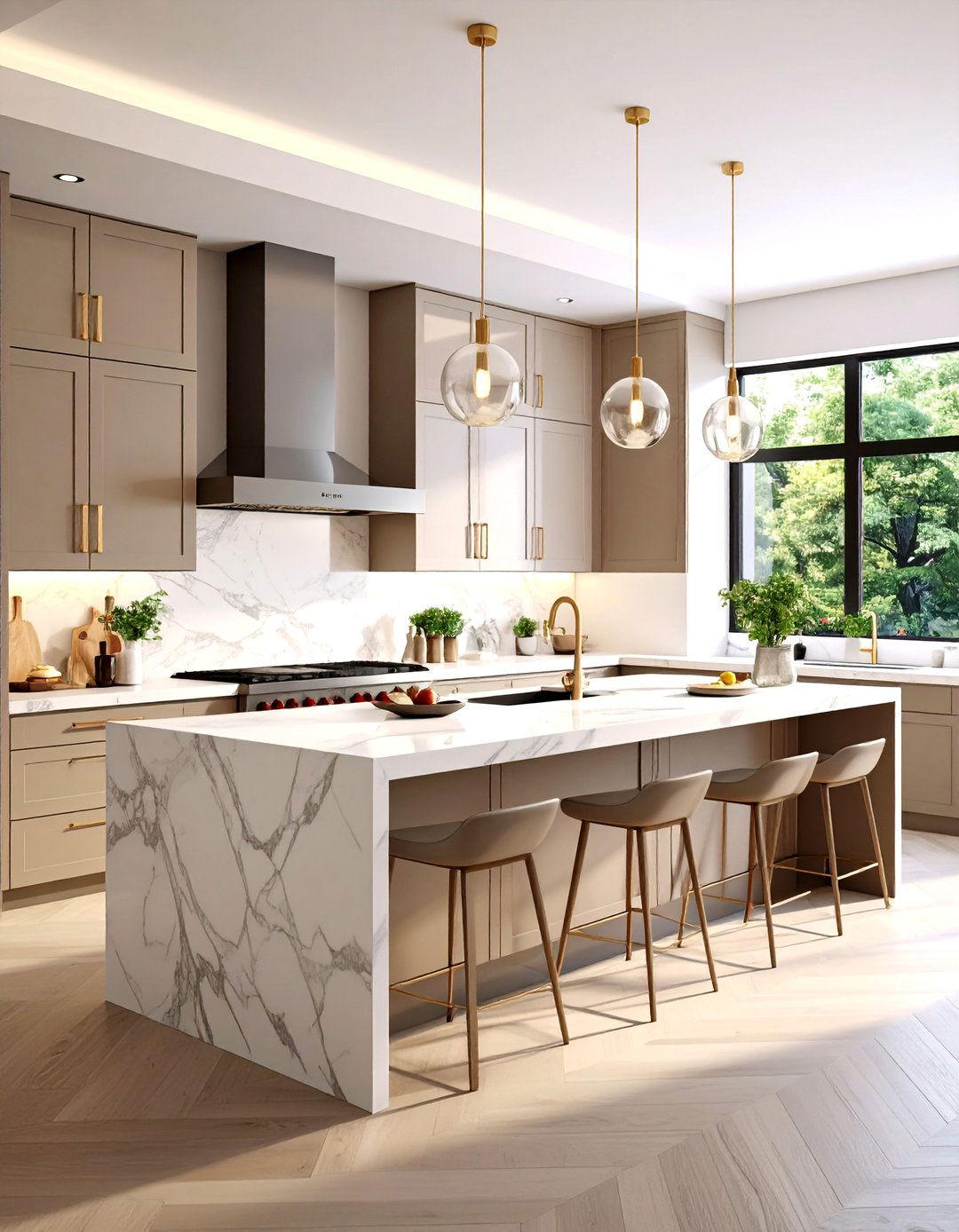
Contemporary Italian kitchen design creates visual interest through sophisticated two-tone cabinet combinations that balance light and dark elements throughout the space. This approach combines beige, black, and glass cabinets with white marble countertops, adding subtle contrast and depth while proving that mixing neutrals creates both practical and elegant modern kitchens. The design typically features darker lower cabinets paired with lighter upper units, creating grounded foundations while maintaining airy upper zones. Black island combinations with white perimeter counters provide striking contrasts without overwhelming the overall design aesthetic. This color strategy allows for creative material combinations, incorporating both painted and natural wood finishes within the same kitchen space. The two-tone approach provides opportunities for mixing textures and finishes, such as combining matte and glossy surfaces or integrating glass elements with solid doors for varied visual appeal and functional variety.
13. Italian Kitchen Design with Statement Range Hood Features
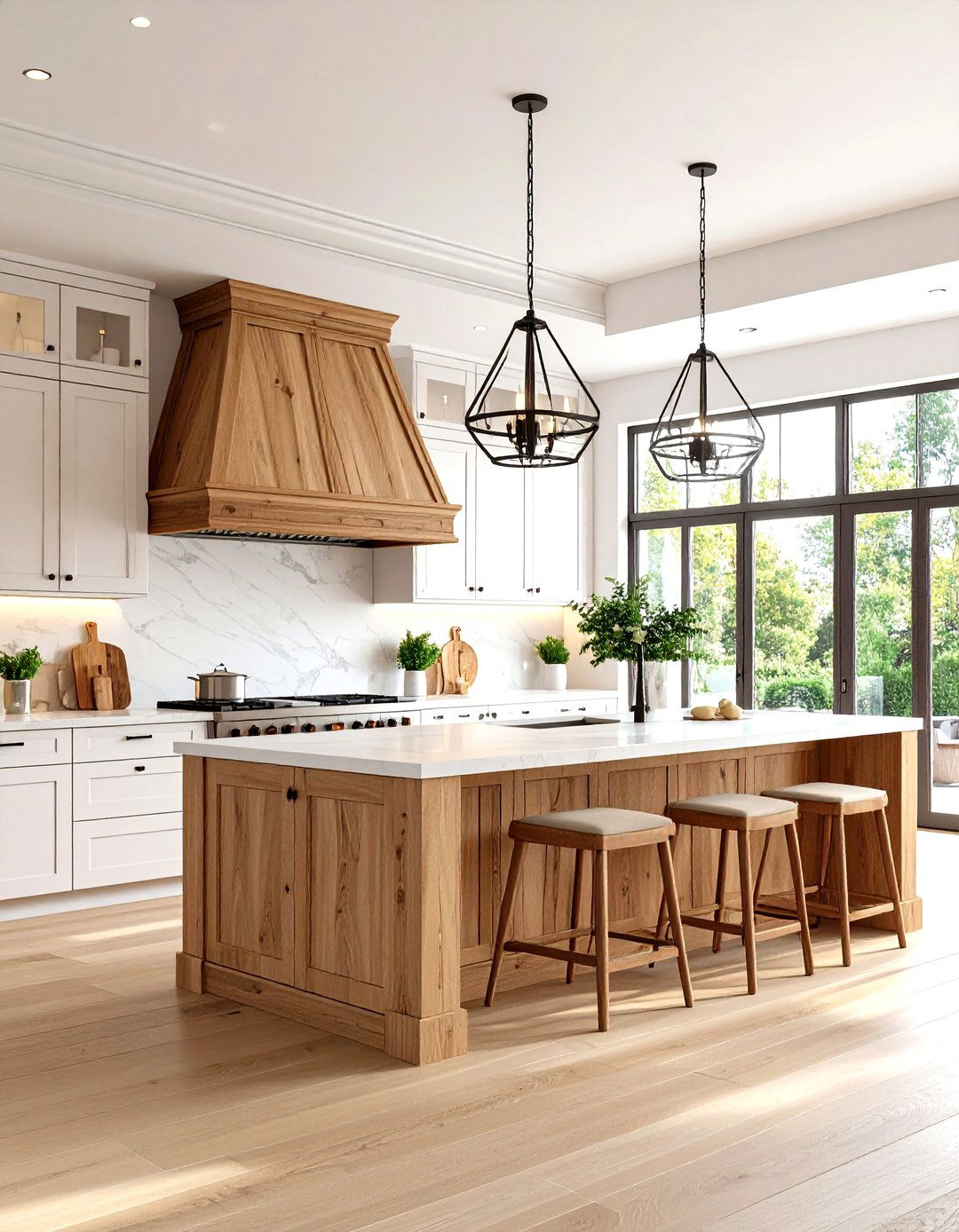
Dramatic Italian kitchen design emphasizes impressive range hoods as architectural focal points that combine essential functionality with striking visual appeal. Range hoods serve as important features combining style with function, available in materials like stainless steel, copper, and wrought iron, with styles ranging from chimney-style for rustic kitchens to wall-mounted statement features. This design approach features custom wood range hoods with ornate detailing that complement traditional Italian cabinetry styles. Wood beam and wrought iron chandelier combinations create classic Italian looks, where natural wood adds warmth and character while iron fixtures bring drama and sophistication. The design incorporates decorative elements like carved details, hand-painted finishes, or metal accent work that reflect regional Italian artistry. Statement range hoods often extend to ceiling height, creating impressive vertical elements that anchor the cooking zone while providing powerful ventilation for traditional Italian cooking methods and entertaining.
14. Open Shelving Italian Kitchen Design with Display Storage

Functional Italian kitchen design celebrates the beauty of everyday objects through carefully curated open shelving that combines practical storage with decorative display opportunities. Open shelving allows homeowners to display dishes and kitchenware in stylish and accessible ways, making this feature particularly popular in contemporary Italian kitchen designs. This approach showcases collections of Italian ceramics, pottery, and glassware that reflect personal style and cultural heritage. Reclaimed shelving materials add character while ground concrete floors and salvaged elements create authentic, environmentally conscious design solutions. The design emphasizes thoughtful arrangement of functional items including copper cookware, wooden cutting boards, and ceramic serving pieces. Fine dishes display adds elegance while connecting kitchens to Italian cultural traditions through family heirlooms and antique pieces. Strategic lighting illuminates displayed items while maintaining the overall aesthetic through hidden fixtures and warm light temperatures.
15. Italian Kitchen Design with Integrated Wine Storage Solutions
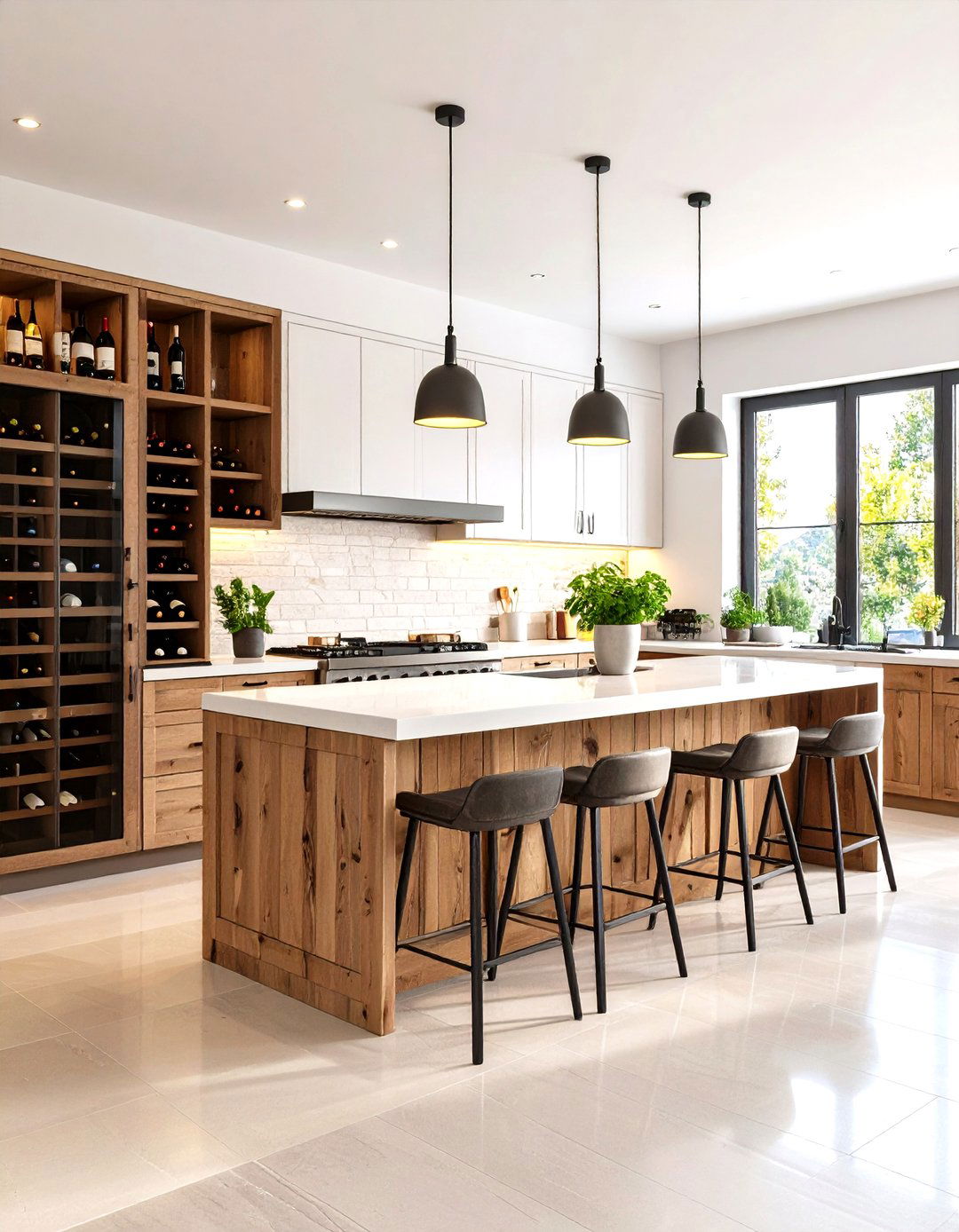
Sophisticated Italian kitchen design honors Italy's renowned wine culture through thoughtfully integrated storage solutions that celebrate viticulture while maintaining design elegance. Wine racks crafted from wrought iron or wood line walls or integrate into islands and cabinetry, highlighting Italy's rich viticulture while keeping selections within arm's reach for spontaneous hospitality. This approach features temperature-controlled wine storage zones that protect valuable collections while creating attractive display opportunities. The design incorporates built-in wine refrigeration units that blend seamlessly with cabinetry systems, maintaining clean aesthetic lines. These elements add ambiance while facilitating the spontaneous hospitality synonymous with Italian culture, supporting extended family gatherings and long, lively dinners. Traditional wine storage techniques include reclaimed wood wine cubbies and wrought iron wall-mounted systems that complement rustic Italian kitchen aesthetics. Modern applications feature sleek glass-front wine coolers and integrated bar areas that support contemporary entertaining while honoring Italian wine traditions.
16. Monolithic Italian Kitchen Design with Seamless Integration
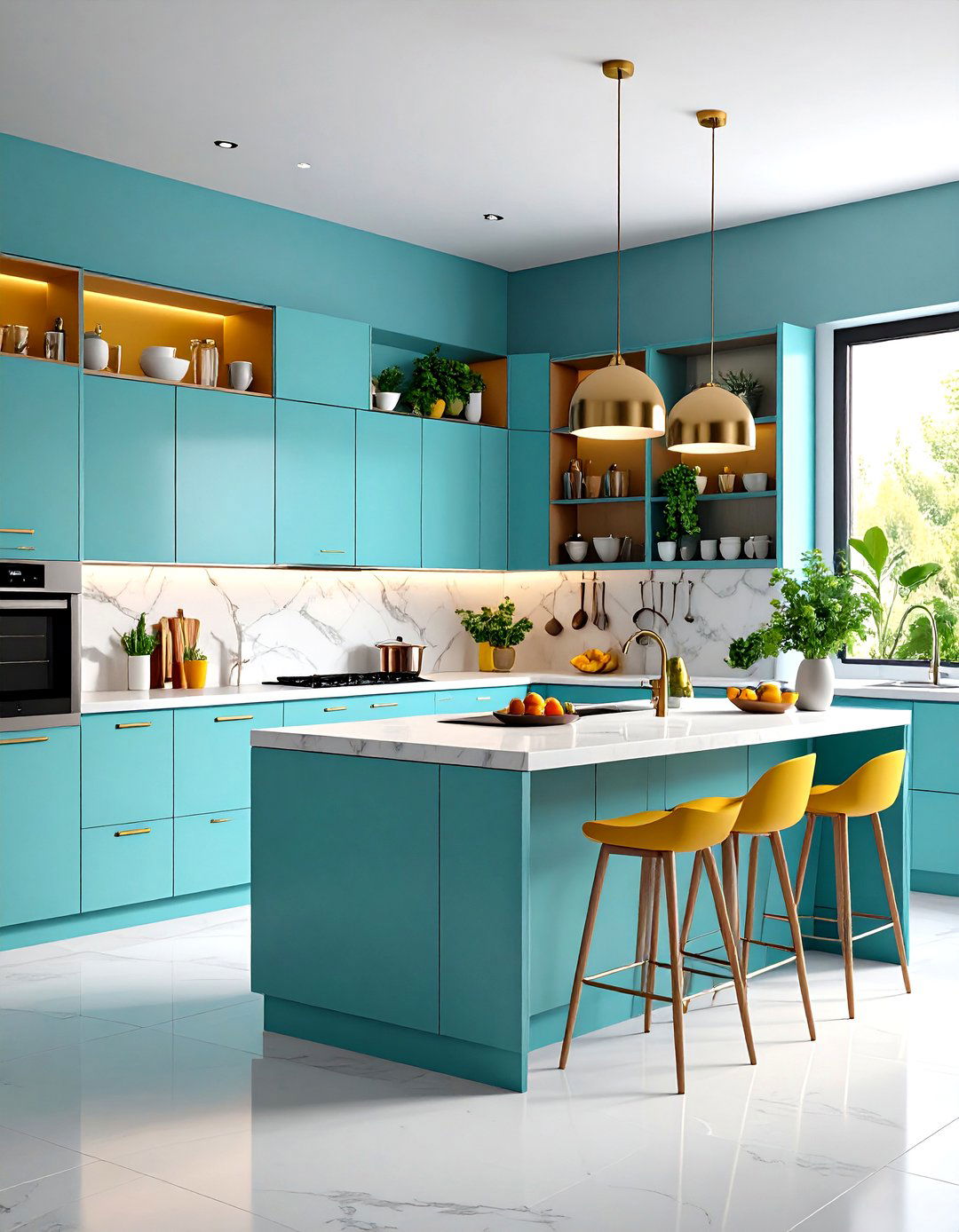
Ultra-modern Italian kitchen design achieves sophisticated simplicity through monolithic design principles that emphasize continuous surfaces and seamless material transitions. Monolithic kitchens translate aesthetic simplicity into functional simplicity, using solid surfaces and subtle patterns that create harmonious outcomes without sacrificing style. This approach features continuous countertop surfaces that flow seamlessly between different functional zones without visible joints or interruptions. Monolithic designs with unusual shapes and curves break traditional kitchen molds while maintaining clean, uninterrupted visual flow. The design emphasizes integrated appliances that disappear into cabinetry systems, creating unbroken sight lines and streamlined functionality. Strategic reduction of materials, angles, and colors creates visually streamlined and functionally agile kitchens that feel both sophisticated and effortlessly usable. Hidden storage solutions and concealed mechanical systems maintain the clean aesthetic while providing all necessary kitchen functionality.
17. Italian Kitchen Design with Hand-Painted Ceramic Tile Features

Artisanal Italian kitchen design celebrates traditional ceramic craftsmanship through hand-painted tile applications that showcase regional artistic heritage and time-honored techniques. Hand-painted ceramic tiles create colorful backsplashes with nature-inspired patterns, while decorative tiles bring color, texture, and charm to kitchen spaces. This approach features custom tile murals behind cooking areas that serve as dramatic focal points reflecting Italian artistic traditions. Hand-painted tiles in classic patterns or bright colors add artisanal charm and can be used as backsplash or flooring features. The design incorporates traditional Italian motifs including lemons, olives, grapevines, and Mediterranean landscapes that connect kitchens to regional culture. Colorful tile backsplashes at locations like Numeroventi in Florence demonstrate how traditional ceramic work enhances modern kitchen designs. These artistic elements pair beautifully with natural materials like wood and stone, creating rich textural combinations that feel both authentic and personally meaningful to homeowners.
18. Italian Kitchen Design with Natural Stone Accent Walls
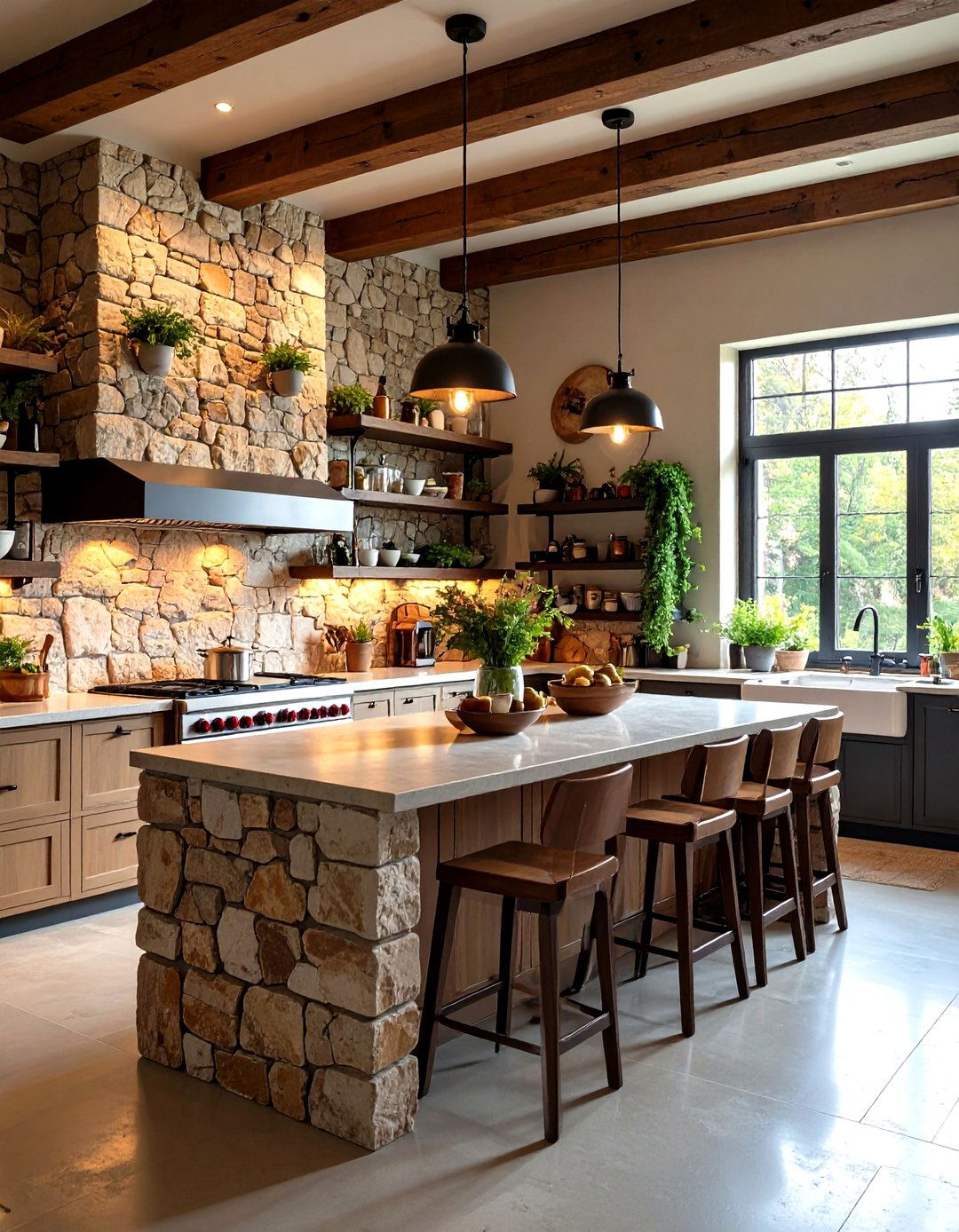
Dramatic Italian kitchen design showcases the raw beauty of natural stone through accent wall applications that create textural focal points and architectural interest. Exposed stone walls combined with reclaimed ceramic tiles and elegant cabinetry create dream kitchens of rustic sophistication. This approach features locally sourced stone materials that reflect regional geological characteristics and traditional building techniques. Natural stone creates rustic and timeless looks that stand the test of time, while terracotta tiles complement stone applications in both neutral and traditional color schemes. The design incorporates lighting strategies that highlight stone texture and natural color variations throughout different times of day. Traditional fieldstone walls showcase artisan techniques used in Italian building, creating authentic connections to centuries of craftsmanship. These natural elements provide perfect backdrops for both traditional wooden cabinetry and contemporary stainless steel appliances, creating balanced relationships between rustic and refined design elements.
19. Italian Kitchen Design with Seamlessly Integrated Appliance Systems
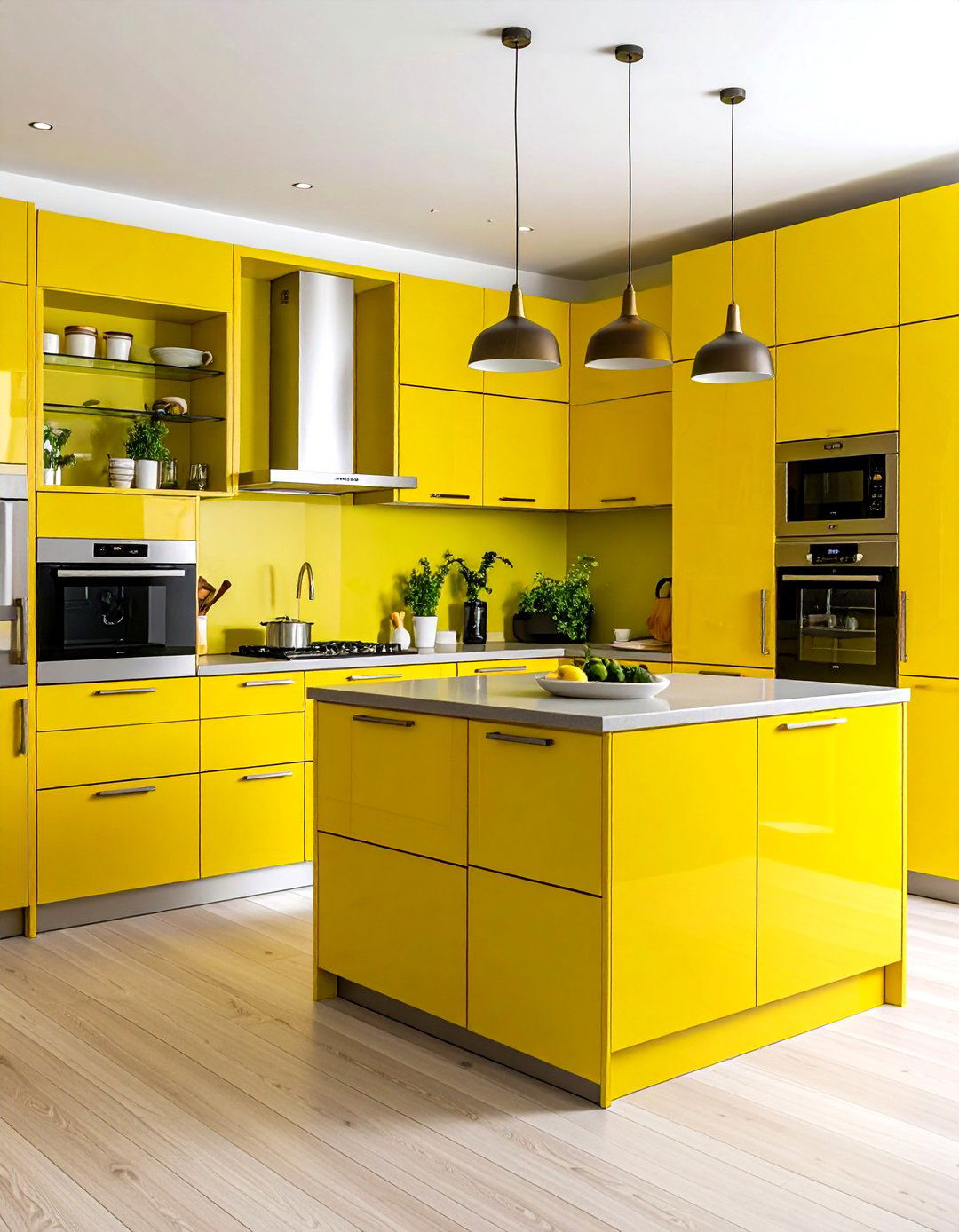
Cutting-edge Italian kitchen design prioritizes functional elegance through perfectly integrated appliance systems that maintain clean aesthetic lines while providing superior performance. Strategic use of recessed channel grips, low toe-kicks, and integrated appliances creates simple, airy, and easy-to-use kitchen environments. This approach features built-in refrigeration, cooking, and cleaning appliances that blend seamlessly with surrounding cabinetry materials and finishes. When appliances are fully integrated with kitchen cabinets, everything becomes easier, with seamless paneling of integrated appliances using the same cabinet materials for smooth, continuous visual harmony. The design emphasizes hidden controls and flush installation techniques that eliminate protruding elements and visual interruptions. Concealed kitchen designs incorporate built-in appliances, flush cabinetry, and appliance garages to maintain sleek, minimalist aesthetics while enhancing feelings of space and organization. Advanced ventilation systems integrate invisibly while providing powerful performance for serious cooking activities.
20. Italian Kitchen Design with Warm Wood Finish Combinations
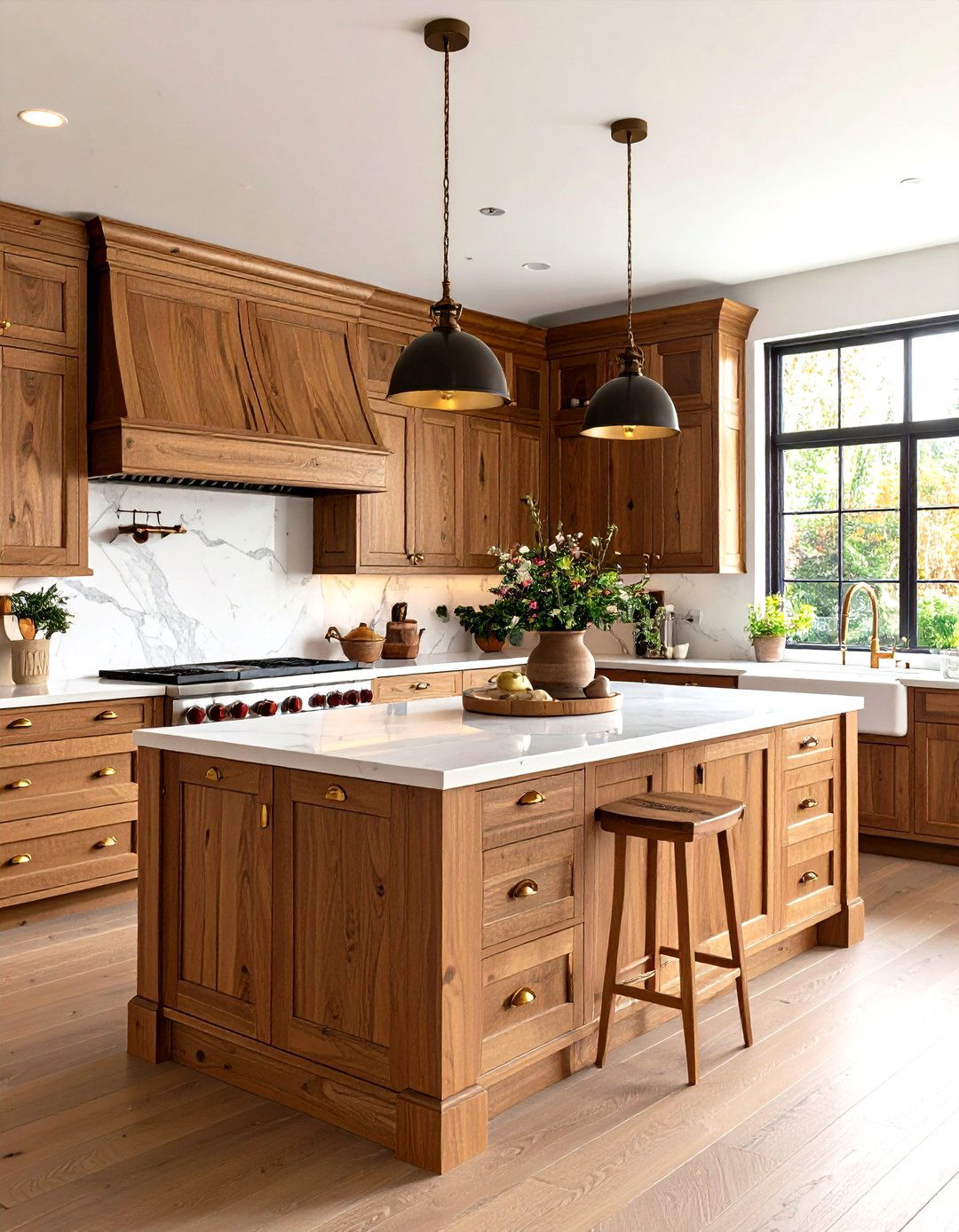
Timeless Italian kitchen design celebrates the natural beauty of wood through carefully selected warm finishes that create inviting, family-centered environments. Darker wood tones, particularly tonal grays with more color incorporated into countertops and backsplashes, feature prominently in modern Italian design kitchens. This approach showcases rich mahogany, walnut, and oak finishes that develop beautiful patina over time. Solid wood cabinetry with warm, durable, and beautiful grain patterns serves as the foundation for Italian kitchen design. The design incorporates traditional Italian woodworking techniques including dovetail joinery and hand-finished surfaces that demonstrate superior craftsmanship. Heat-treated solid wood processes enhance natural beauty while ensuring durability, with satin lacquered finishes using water-based paints that align with ecological sustainability principles. Warm wood finishes pair beautifully with natural stone countertops and brass hardware, creating rich material combinations that feel both luxurious and authentically rooted in Italian design traditions.
Conclusion:
Italian kitchen design offers an inspiring blend of traditional craftsmanship and contemporary innovation, creating spaces that truly embody the heart of the home. From rustic Tuscan farmhouse aesthetics with terracotta tiles and exposed beams to sleek modern designs featuring integrated appliances and monolithic surfaces, these 20 design approaches demonstrate the versatility and enduring appeal of Italian style. Whether incorporating hand-painted ceramics, natural stone accents, or sophisticated wine storage solutions, each design celebrates the Italian philosophy of combining beauty with functionality, ensuring your kitchen becomes a welcoming space for both everyday cooking and memorable entertaining experiences.


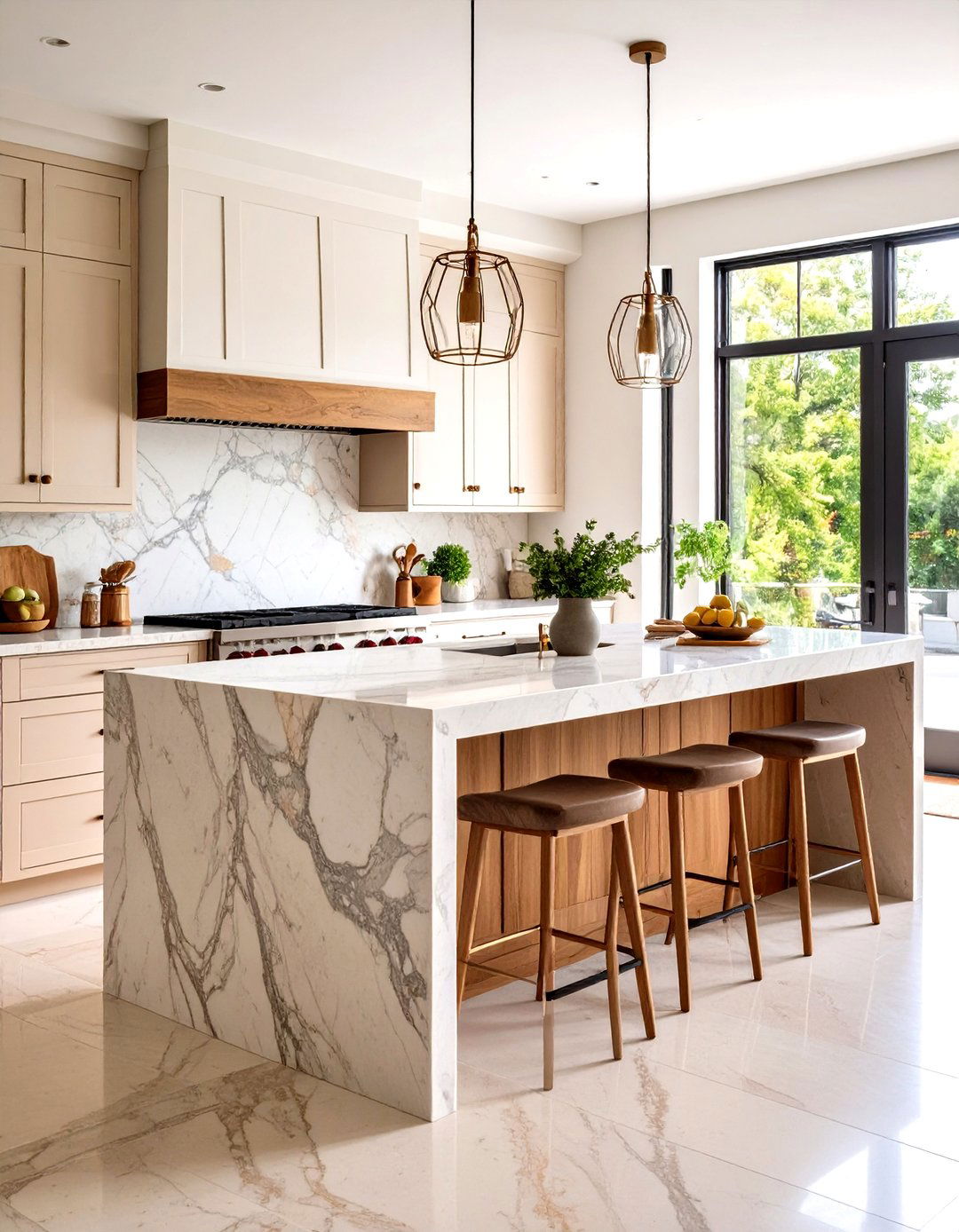
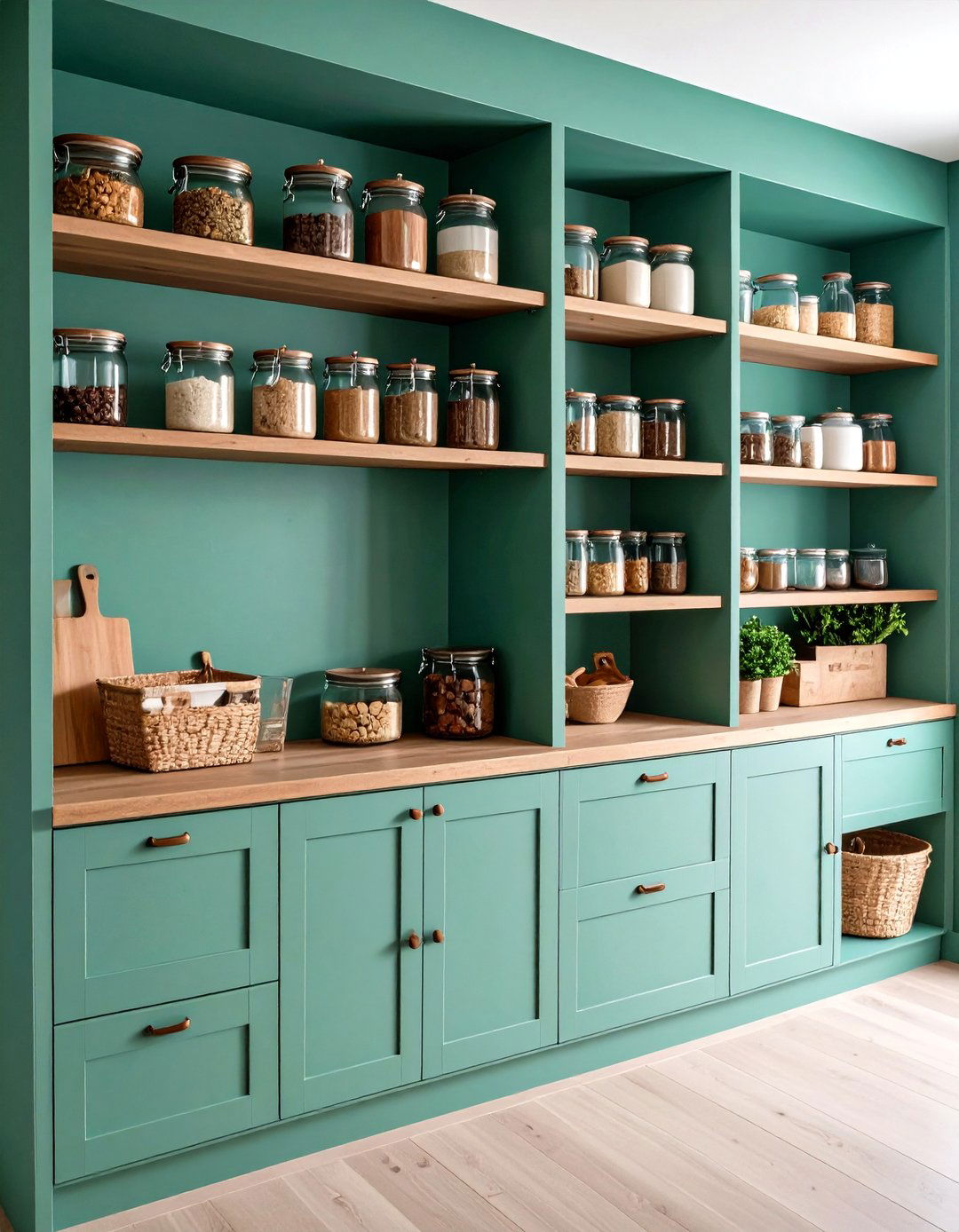
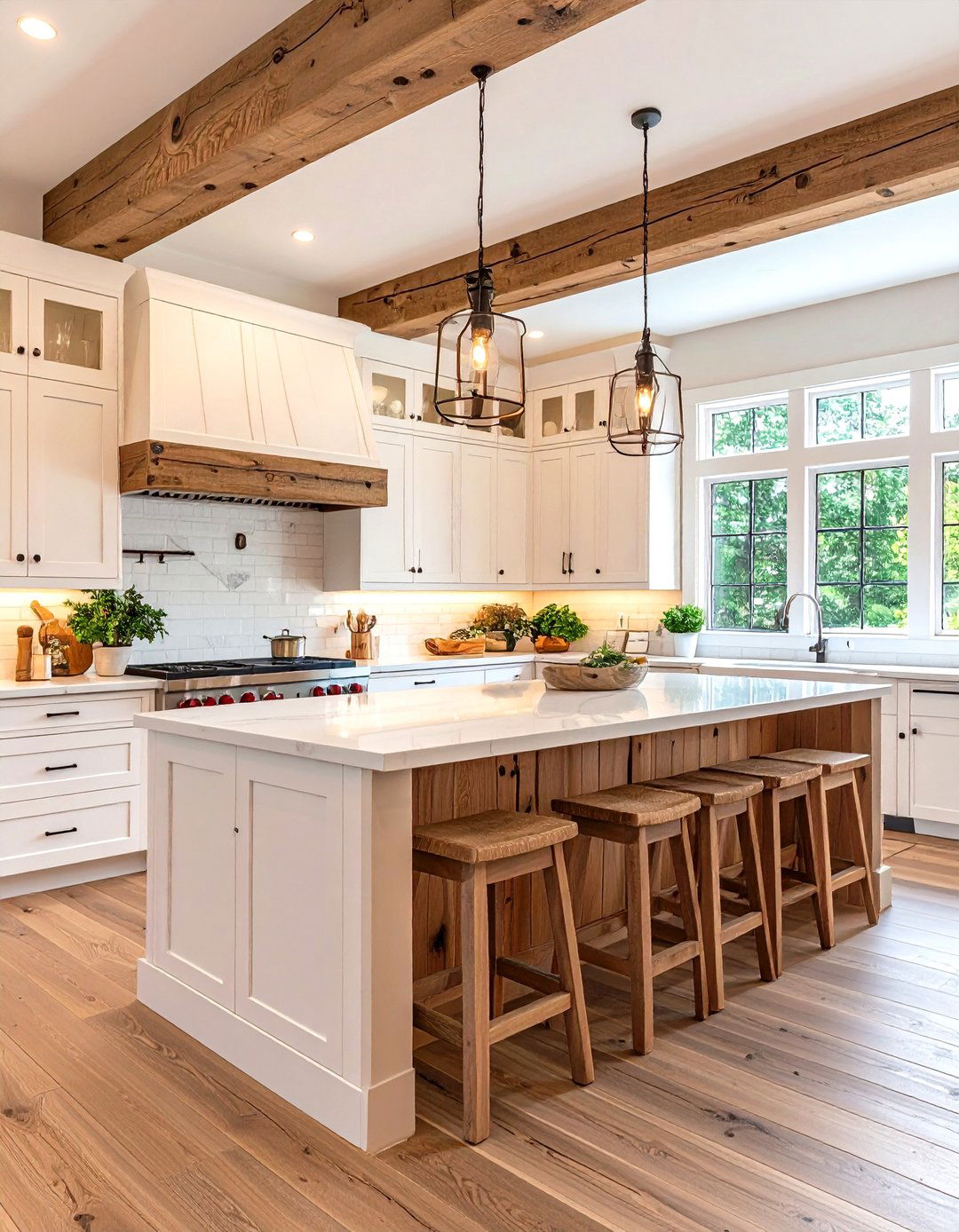

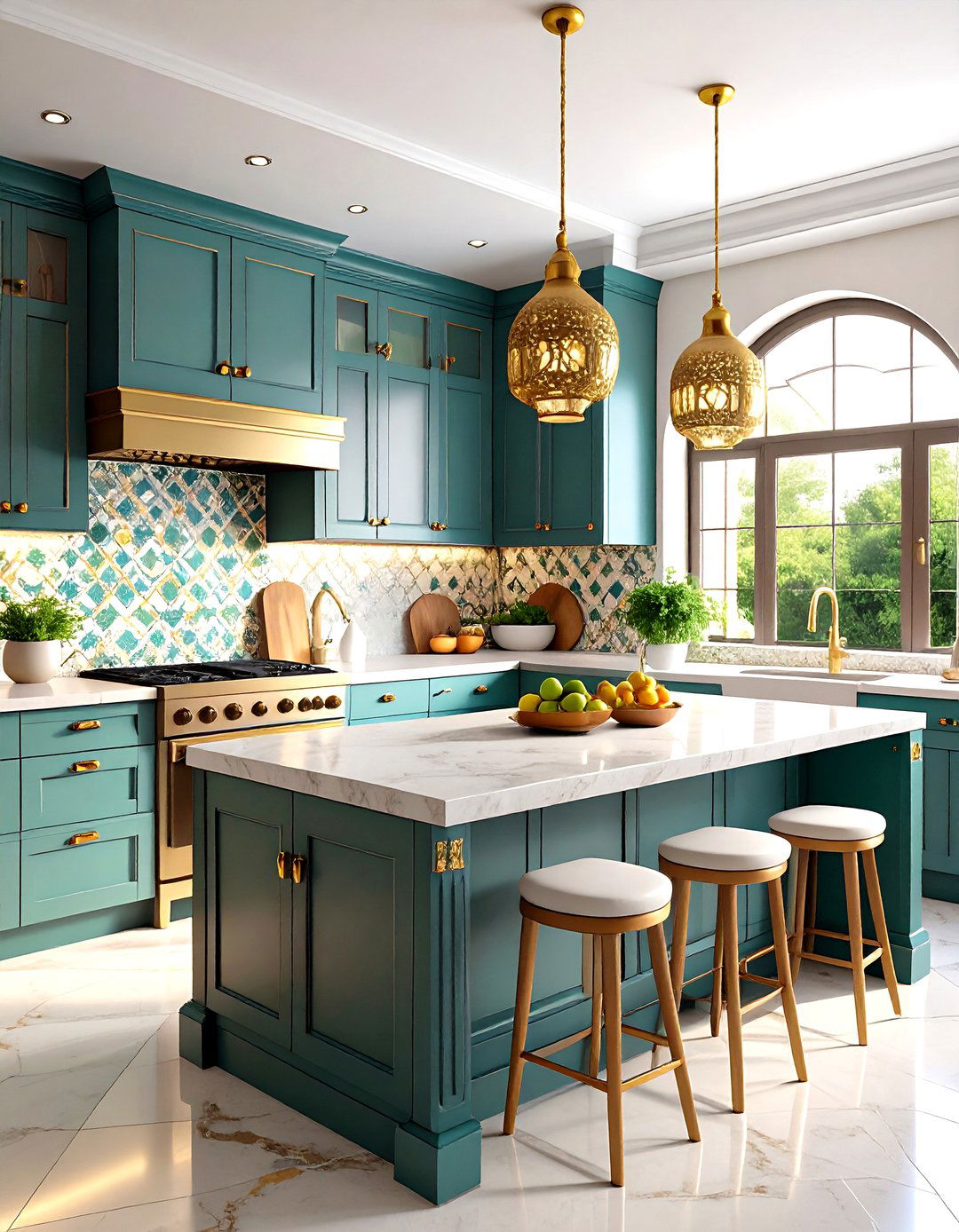
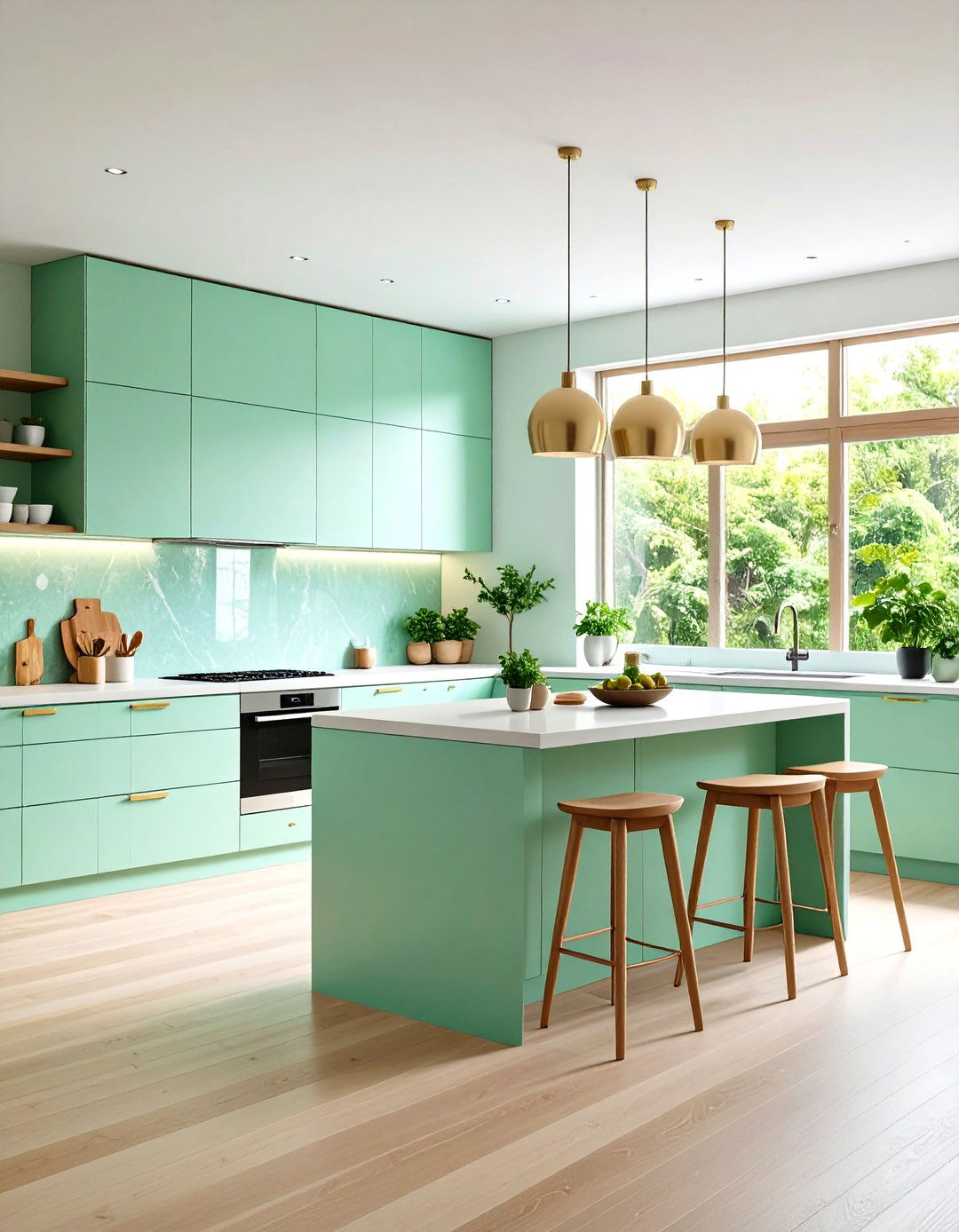

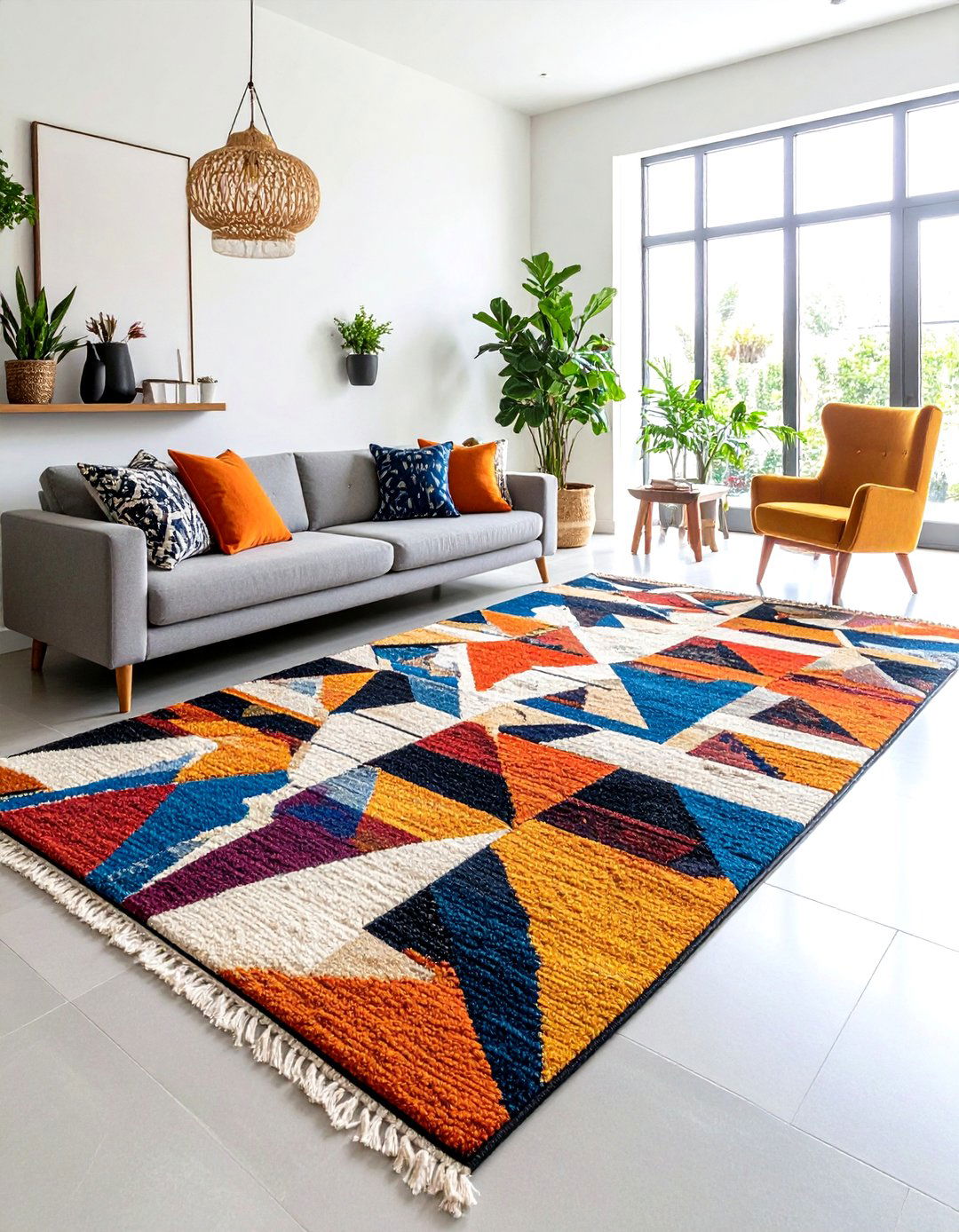
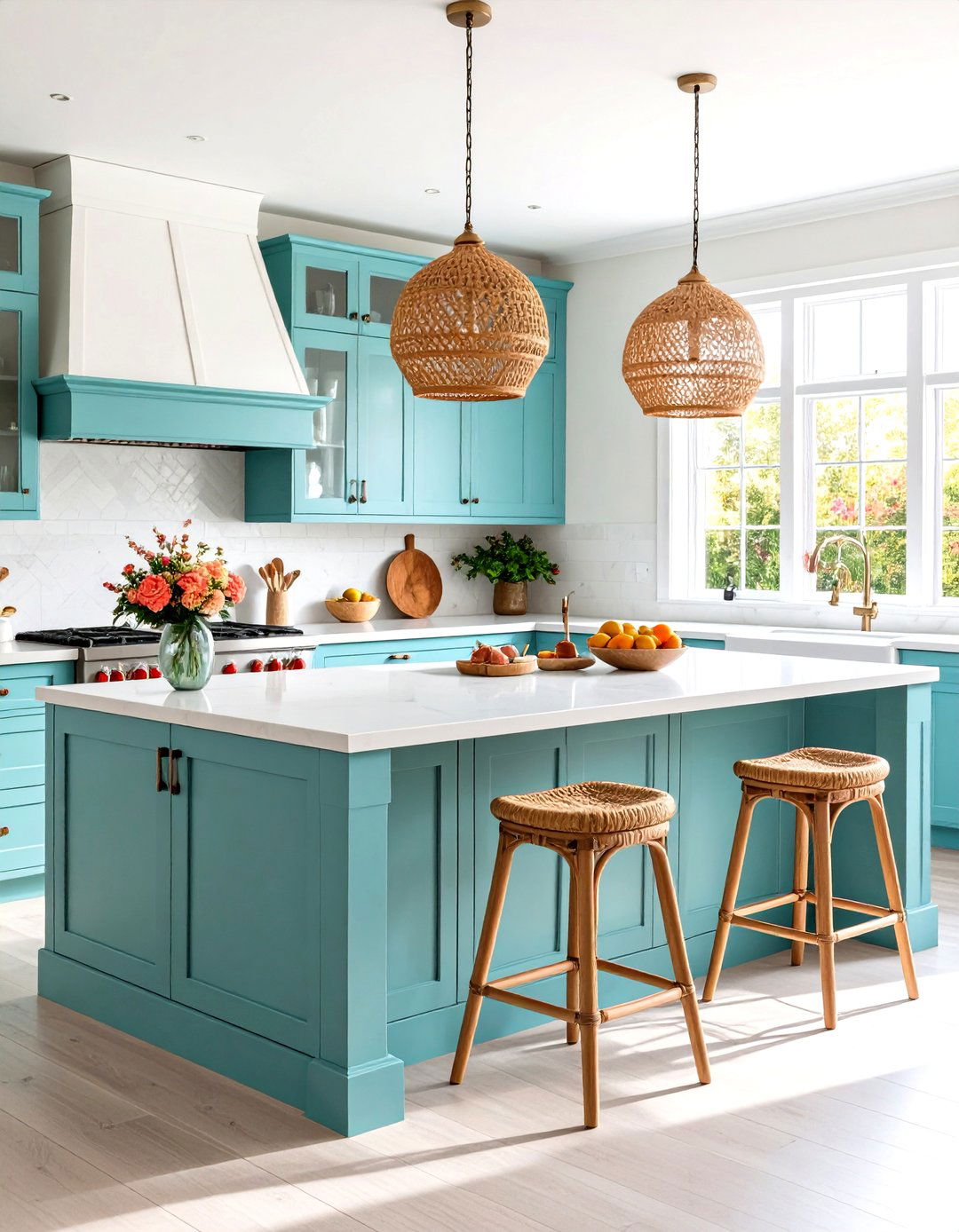


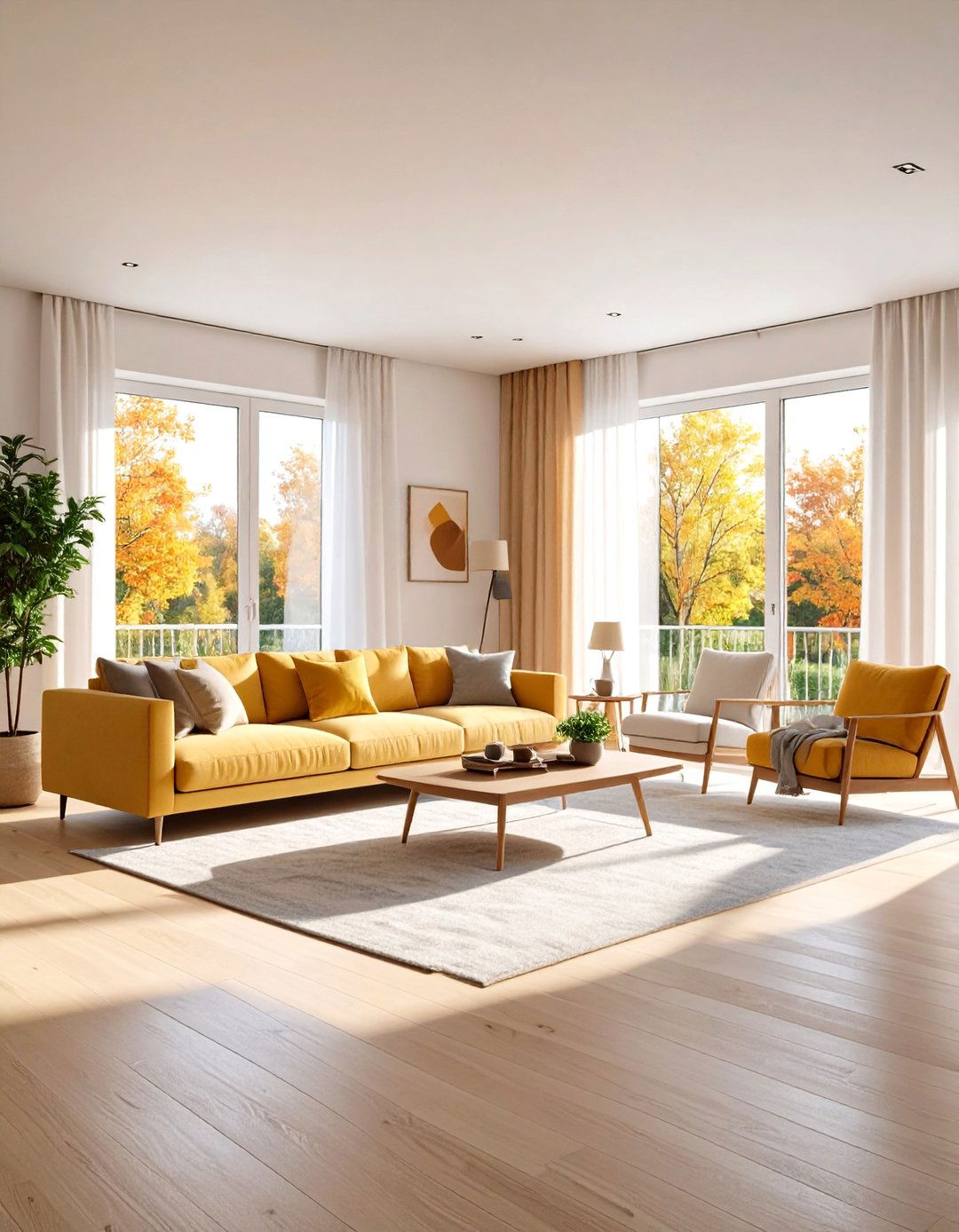
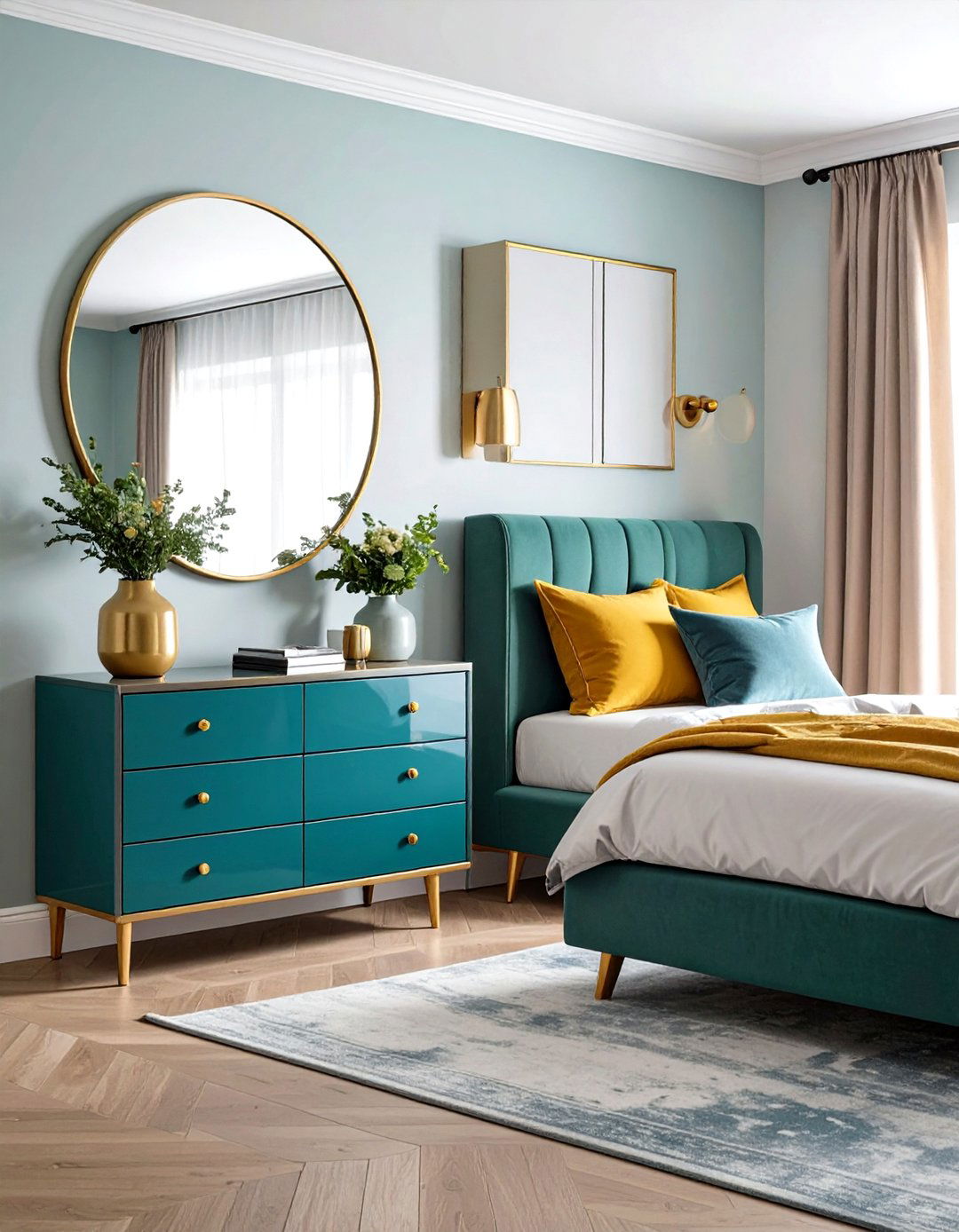
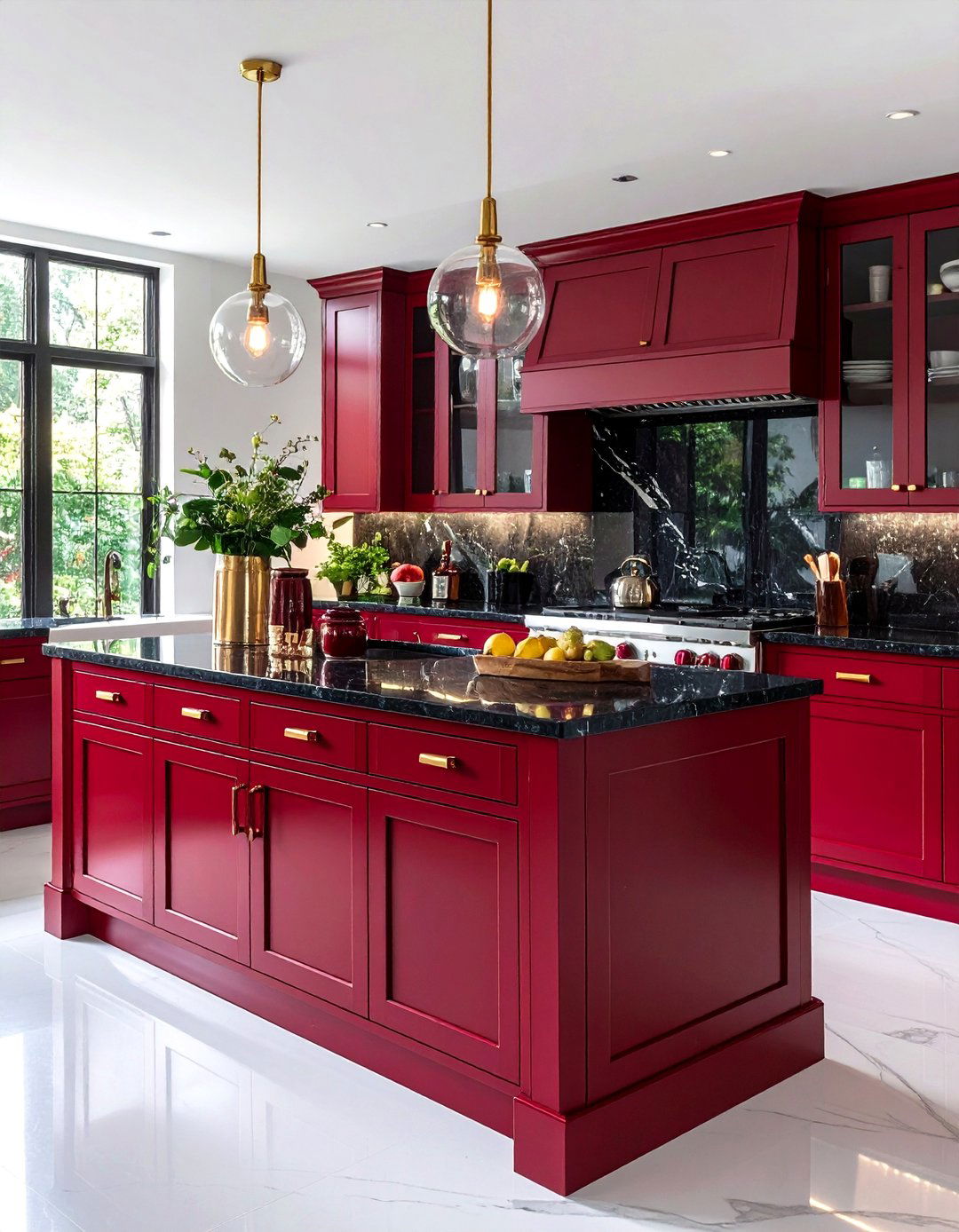
Leave a Reply